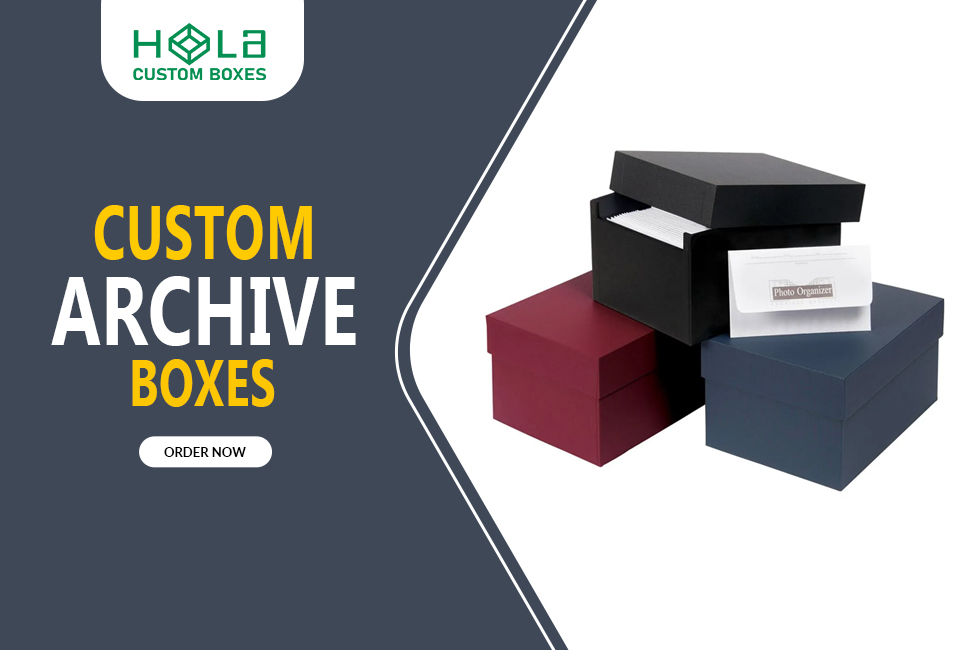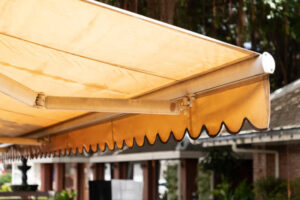Are you feeling lost in a sea of options when it comes to choosing the right materials for your custom archive packaging boxes? Don’t worry, help is here! In this guide, we will navigate through the vast ocean of choices and steer you towards making an informed decision. Think of us as your trusty compass, guiding you towards the materials that best suit your needs.
Understanding your packaging requirements is crucial before diving into the world of different material options. From durability and longevity to environmental impacts and cost constraints, we will explore each aspect in detail. We want to ensure that your custom archive packaging boxes not only protect and preserve your valuable items but also align with your budget and sustainability goals.
So buckle up and get ready for a journey filled with technical knowledge, precise information, and practical tips. By the end of this guide, you’ll be equipped with all the tools necessary to choose the perfect materials for your custom archive packaging boxes. Let’s set sail on this adventure together!
Key Takeaways
- Strength, durability, and compatibility with preservation techniques are important factors to consider when choosing archival materials for custom archive packaging boxes.
- Acid-free paperboard provides protection against light and moisture, making it suitable for documents and papers. It offers archival quality and can be cost-effective for certain applications.
- Polypropylene has excellent resistance to tearing and chemical degradation, making it ideal for archiving photographs and delicate artifacts. It offers long-lasting preservation, clarity, and visibility. However, it may not provide sufficient protection from light and moisture and requires proper storage conditions to avoid degradation.
- Staying informed about market trends is crucial as it helps keep up with advancements in archival materials, identifies new options for improved preservation, finds cost-effective solutions, enables adaptation to changing needs, and enhances the overall archival process.
Understanding Your Packaging Needs
So, you’re trying to figure out what kind of packaging materials are best for your custom archive boxes? Let’s start by understanding your specific packaging needs. Analyzing your requirements is crucial in determining the right materials for your custom archive packaging boxes. You need to identify priorities such as the level of protection required, the weight and size limitations, and any specific environmental considerations.
When it comes to protecting valuable archival items, you must consider factors like durability, moisture resistance, and insulation properties. If you’re shipping delicate artifacts or documents that require extra care, materials like corrugated cardboard with moisture-resistant coatings or foam inserts may be ideal choices.
Weight and size limitations play a vital role in choosing appropriate materials. For larger archives, sturdy corrugated cardboard may be necessary. However, if you have smaller items that require precise fitting and cushioning, materials like polyethylene foam or molded pulp can provide excellent protection while reducing excess space.
Don’t forget to take into account any environmental considerations. If sustainability is important to you, exploring eco-friendly options made from recycled or biodegradable materials could be a great choice.
Understanding your specific needs will help guide you in exploring different material options for your custom archive packaging boxes without compromising on quality or functionality.
Exploring Different Material Options
When it comes to selecting the perfect materials for your custom archival packaging boxes, you’ll want to explore a variety of options that not only meet your needs but also enhance the overall aesthetic and durability of your packaging. In order to stay up-to-date with current packaging trends, it’s important to consider materials that are eco-friendly and sustainable. Materials like recycled corrugated cardboard or biodegradable plastics are becoming increasingly popular choices in the industry.
Customization options are also key when choosing materials for your packaging boxes. You want materials that can be easily printed on, allowing you to add your brand logo or any other design elements that will make your packaging unique and eye-catching. Additionally, consider materials that can be easily shaped or molded into different sizes and configurations, giving you the flexibility to create custom boxes that perfectly fit your products.
As you evaluate different material options, it’s essential to keep in mind the importance of durability and longevity. Your archive packaging boxes need to withstand various handling scenarios without compromising their contents. In the next section about evaluating durability and longevity, we will discuss how certain materials can provide added protection for long-term storage.
Evaluating Durability and Longevity
To ensure your custom archival packaging stands the test of time, it’s important to consider the durability and longevity of the materials you choose. When evaluating aesthetics, it is crucial to select materials that not only look visually appealing but also have the ability to withstand wear and tear over an extended period. Opt for materials that are resistant to fading, discoloration, and degradation caused by environmental factors such as sunlight or moisture.
Assessing storage capacity is another vital aspect when choosing materials for your custom archive packaging. You need to consider how well the chosen material can hold and protect your valuable items. It should offer ample space while providing adequate support and cushioning to prevent damage during transportation or storage.
Furthermore, keep in mind that different materials have varying levels of strength and durability. For instance, corrugated cardboard offers excellent protection against impacts but may not be suitable for long-term storage due to its susceptibility to moisture damage. On the other hand, plastic polymers like polypropylene or polyethylene provide superior resistance against water, making them ideal for long-term preservation.
Considering environmental impacts is essential in creating sustainable packaging solutions. Transitioning seamlessly into this next section about ‘considering environmental impacts,’ it’s crucial to evaluate how your chosen materials align with eco-friendly practices without compromising durability and longevity.
Considering Environmental Impacts
Consider how your selection of materials can make a positive impact on the environment while still providing durability and longevity in your archival packaging. In today’s environmentally conscious world, it is essential to consider eco-friendly alternatives and sustainable packaging solutions. By choosing materials that are biodegradable, recyclable, or made from renewable resources, you can significantly reduce the environmental footprint of your packaging.
One option is to use corrugated cardboard boxes. These boxes are made from recycled paper fibers and can be easily recycled again after use. They provide excellent protection for your archives while also being lightweight and cost-effective. Another eco-friendly alternative is molded pulp packaging, which is made from recycled paper waste and can be composted after use.
In addition to using sustainable materials, you should also consider reducing the amount of packaging used. Minimizing unnecessary layers or utilizing smaller box sizes not only reduces material waste but also lowers shipping costs.
By considering environmental impacts when selecting your archival packaging materials, you can demonstrate your commitment to sustainability while still ensuring the durability and longevity of your archives. With eco-friendly alternatives and sustainable solutions readily available, there is no need to compromise on either aspect.
As you weigh cost and budget constraints in choosing the right materials for custom archive packaging boxes…
Weighing Cost and Budget Constraints
As you deliberate the financial implications of your choices, it is imperative to strike a balance between cost-effectiveness and quality when selecting materials for your archival packaging. When it comes to weighing cost and budget constraints, consider exploring cost-effective options that can still provide the necessary protection for your valuable archival items. One alternative material that you may want to consider is corrugated cardboard. This material is lightweight, durable, and affordable, making it a popular choice for many packaging needs. Additionally, corrugated cardboard can be easily customized to fit specific dimensions and requirements.
Another option worth considering is polypropylene. This plastic material offers excellent resistance to moisture, chemicals, and tearing while also being cost-effective. Polypropylene is commonly used in archival packaging due to its durability and versatility.
When evaluating alternative materials based on their costs, it’s important not to compromise on the quality or long-term preservation of your archive items. Remember that in order to make an informed decision about which materials are most suitable for your needs, you should take into account factors such as item fragility, storage conditions, and anticipated handling.
Transitioning into the subsequent section about making an informed decision: By carefully considering both cost-effective options and alternative materials, you can ensure that your custom archive packaging boxes meet both your financial requirements and the necessary standards for preserving your valuable items effectively.
Making an Informed Decision
When it comes to selecting the best materials for your archival packaging, it’s essential to gather all the necessary information and make an informed decision. One way to do this is by weighing the pros and cons of different material options. Take into consideration factors such as strength, durability, and compatibility with preservation techniques. For instance, acid-free paperboard may be a suitable option for documents that require protection from light and moisture, but it may not be ideal for heavier items or long-term storage. On the other hand, polypropylene offers excellent resistance to tearing and chemical degradation, making it a popular choice for archiving photographs or delicate artifacts.
To ensure you’re making the right choice, researching market trends is also crucial. Stay updated on advancements in archival materials by consulting industry publications and attending trade shows. This will help you discover new options that offer improved preservation capabilities or cost-effectiveness.
Ultimately, finding the right materials for custom archive packaging involves careful consideration of various factors. By weighing the pros and cons of different options and staying informed about market trends, you can make an informed decision that meets your specific needs while ensuring optimal preservation of your valuable archives.






